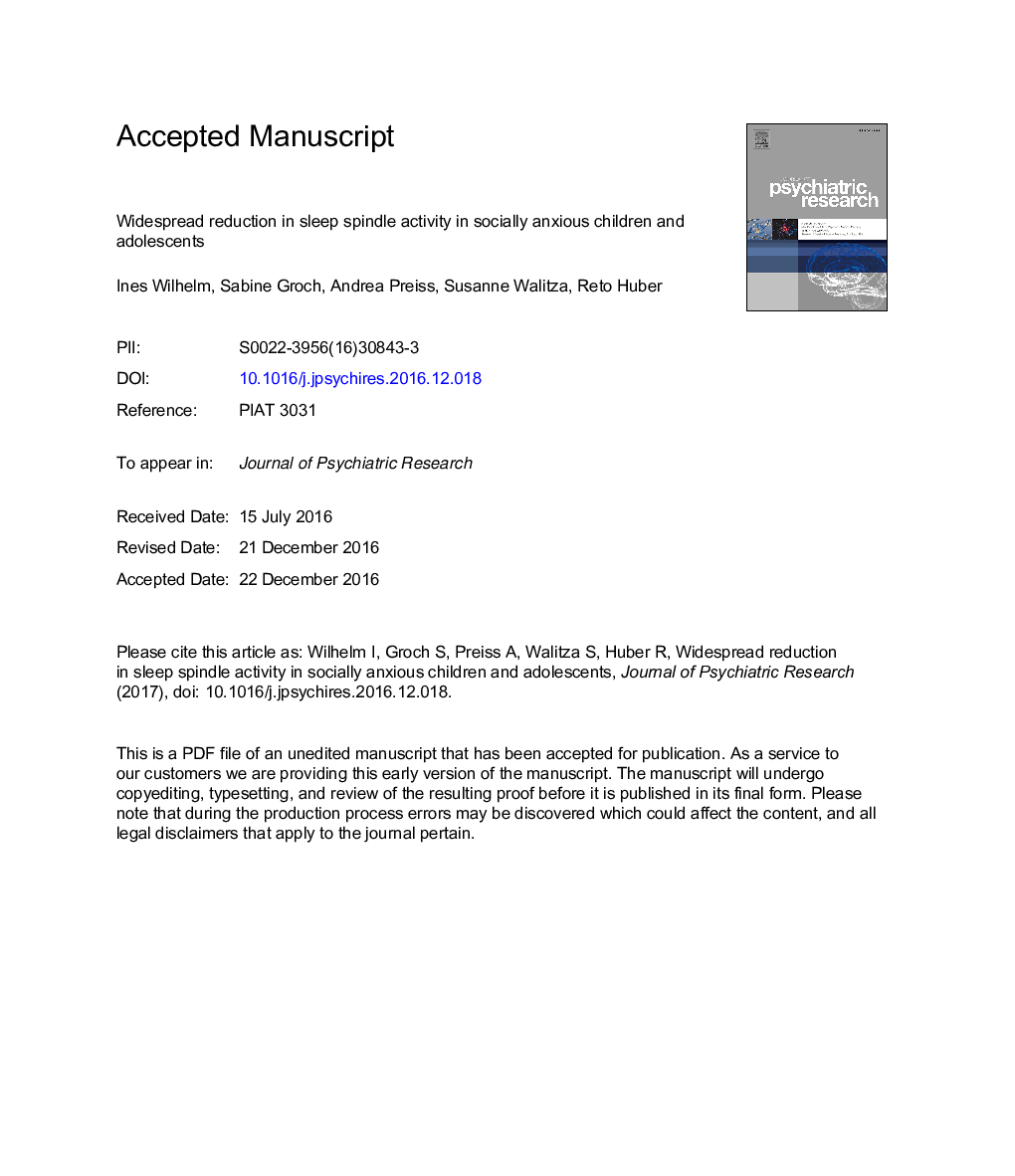| Article ID | Journal | Published Year | Pages | File Type |
|---|---|---|---|---|
| 4932091 | Journal of Psychiatric Research | 2017 | 35 Pages |
Abstract
Social anxiety disorder (SAD) is one of the most prevalent psychiatric diseases typically emerging during childhood and adolescence. Biological vulnerabilities such as a protracted maturation of prefrontal cortex functioning together with heightened reactivity of the limbic system leading to increased emotional reactivity are discussed as factors contributing to the emergence and maintenance of SAD. Sleep slow wave activity (SWA, 0.75-4.5Â Hz) and sleep spindle activity (9-16Â Hz) reflect processes of brain maturation and emotion regulation. We used high-density electroencephalography to characterize sleep SWA and spindle activity and their relationship to emotional reactivity in children and adolescents suffering from SAD and healthy controls (HC). Subjectively rated arousal was assessed using an emotional picture-word association task. SWA did not differ between socially anxious and healthy participants. We found a widespread reduction in fast spindle activity (13-16Â Hz) in SAD patients compared to HC. SAD patients rated negative stimuli to be more arousing and these arousal ratings were negatively correlated with fast spindle activity. These results suggest electrophysiological alterations that are evident at an early stage of psychopathology and that are closely linked to one core symptom of anxiety disorders such as increased emotional reactivity. The role of disturbed GABAergic neurotransmission is discussed as an underlying factor.
Related Topics
Life Sciences
Neuroscience
Biological Psychiatry
Authors
Ines Wilhelm, Sabine Groch, Andrea Preiss, Susanne Walitza, Reto Huber,
